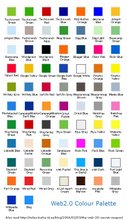 Such is the connected up and accelerated presence of the Geek Chic world it is always interesting when one pauses. And can take stock of the consequences of overly excessive (so the media would have us believe) forms of communication. Recently, following such criticism (‘blogging and Facebook, isn’t that just the biggest waste of time?’) I had tried to explain how such an ‘excessive’ focus and attention to social detail was in fact an essential life skill (and style) for the grown up world of the web. And so it is with delight that I'm in attendance of the Channel 4 led 2Gether Festival this week that provides opportunity to take a look at how digital technologies are changing our world. For better or for worse?
Such is the connected up and accelerated presence of the Geek Chic world it is always interesting when one pauses. And can take stock of the consequences of overly excessive (so the media would have us believe) forms of communication. Recently, following such criticism (‘blogging and Facebook, isn’t that just the biggest waste of time?’) I had tried to explain how such an ‘excessive’ focus and attention to social detail was in fact an essential life skill (and style) for the grown up world of the web. And so it is with delight that I'm in attendance of the Channel 4 led 2Gether Festival this week that provides opportunity to take a look at how digital technologies are changing our world. For better or for worse?One of the major sources of confusion is ignorance over the functionality of blogging lifestyle and a connected social immersion. Misplaced concerns about the lack of quality contact and content in the context of social networking still lacks a clear and workable theorisation. I’ll be speaking on the Thursday and hope to engage with not only the ‘problems’ of such lifestyle, but to offer some solutions too.
The transformations of our culture, social structure and personal identity is as much about the disputed distinction between ‘quality’ face-to-face encounters compared to the ‘poorer’ mediated contact on SNSs and the rest of Web 2.0, as a lack of understanding about how to use such social tools.
So lets define this as a social speeding up of encounters. Communication is of the moment and for the moment. Missed that wall post? To respond two days later you’re either too late, or labelled as ‘neglectful’ of friends and ‘careless’ with messages. The speeding up and compression of actions puts an increased pressure on time. Unlike networks and social networking resources rather than being available in abundance time holds everyone accountable making contact scarce and if we are not careful a more harassed state.
Meanwhile time shifting aside on Thursday I’m going to enjoy the opportunity to meet and greet some of the best in other networks and create possibilities for change.




